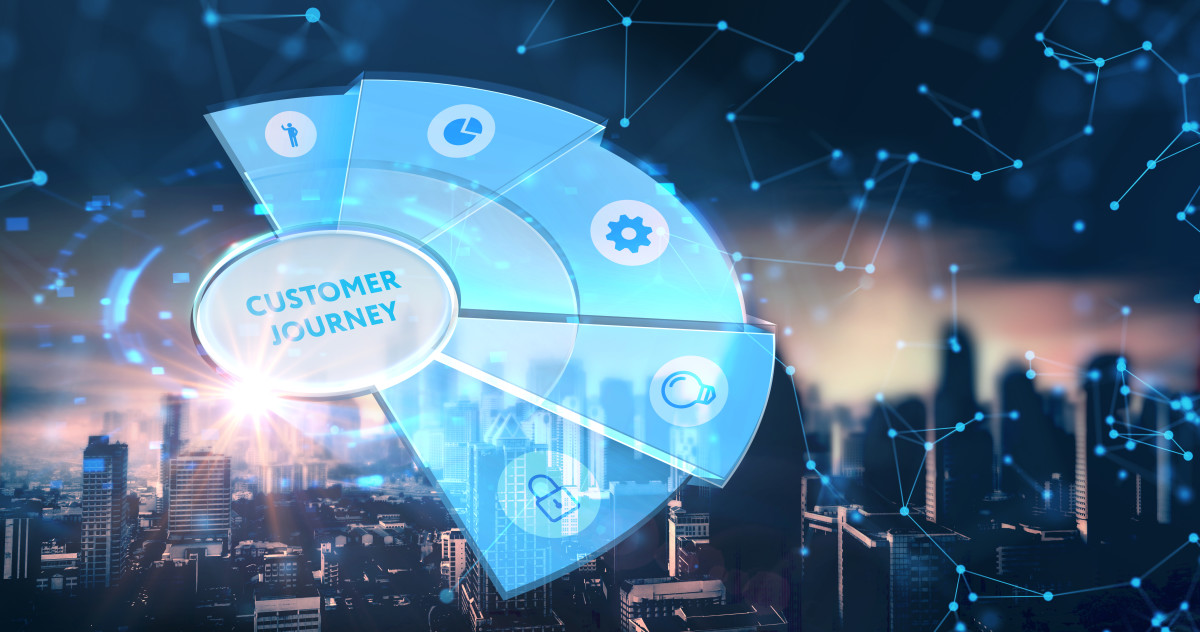
One of the lasting effects of the Covid-19 pandemic is that consumers are shopping online more than ever before. According to Forrester, most American adults who use the internet regularly say it’s easier to find products online and that they find products there they can’t find anywhere else.
But consumers aren’t all the same. Boomers, Gen-Xers, Millennials, and Gen-Zers use the Internet in different ways and are looking for different things.
While it’s crucial to know what your customers want, their behavior can sometimes be puzzling for marketers. For example, you may wonder why some shoppers take a long time to make a purchase or why they abandon their carts midway through the checkout process?
This is where a seamless customer journey — from brand awareness through brand advocacy — is important. A customer journey generally describes the steps and interactions a user goes through on the way to a desired outcome. It’s typically broken down into stages and substages to get an understanding of the critical points of engagement so you can plan connected content and interactivity around them.

It takes a lot of time, effort, and cross-team collaboration to create a seamless customer journey. And while it may not provide the exact answer to all your questions, it can help narrow down possible explanations by allowing you to empathize with and understand your customers. This can have a huge impact on your brand, especially on the overall growth of your business, because a better design and better experience shows your customers that you value them.
According to PwC’s Future of CX survey, 1 in 3 customers say they’ll stop shopping with a brand, even if they love it, after just one poor experience. And a whopping 92% say they’ll abandon a company after just two or three negative interactions.
If these consumers then turn to social media to share their experiences, that can dissuade more potential customers from doing business with you, compounding the importance of a seamless customer journey.
Avoid Fragmented Journeys
No customer journey is exactly the same — they can differ based on customer segments, business type, and industry.
Understanding the target audiences for your company is the first step in designing a customer journey and, thus, a better experience. Ensuring that you utilize connected data — customer data from cross-functional and cross-channel interactions that’s centralized to create a single view of the customer — is critical to delivering a connected, consistent experience.
In retail, various types of data — customer expectations, emotions and feedback, operational metrics, and other business data — must be incorporated into the customer journey map. But while data is the driving force, obstacles can get in the way and lead to disconnected, or fragmented, journeys across your various channels. These obstacles include organizational silos, siloed data, inaccuracy and inconsistency of data, lack of technology and tools, and a lack of customer understanding.
Integrating good data into the customer journey at the right place and time will ensure that your customers get the personalized experiences they desire.
Some businesses focus only on individual touchpoints, but this reinforces organizational silos, causing issues for employees and creating an inconsistent experience for consumers. Since the touchpoints are already integrated with the journey, you need to see them in a connected way and design accordingly.
Strategies for a Seamless Customer Journey
Even if the above obstacles aren’t in your way, the issue is often speed, timeliness, and the ability to glean insights fast enough to be able to deliver the right experience in real time. Here are a few best practices for designing a seamless customer journey:
Put customer relationships first: Customers have many options for purchasing products or services, and it’s important to create a strong bond to keep them coming back. Communicate with them with prompt actions and valuable insights.
Identify your target customers’ true goals: Start by developing a buyer persona, which will help you tailor your marketing and fulfill your customers’ needs.
Pay attention to shifting expectations: Customer expectations have transformed the way businesses interact with them. Utilize social monitoring and listening tools and technology to conduct research and analyze results.
Understand the psychology behind online and offline shopping: Knowing how your customers browse, search and select products or services can help you present your offerings in a way that will make them repeat customers.
Offer personalization: An effective personalization strategy can help your business keep up with your competitors. Using the data gathered, offer the right product and services to the right customers at the right time.
Deliver a consistent brand experience: According to Forrester, 95% of consumers use three or more channels in a single interaction, with 62% of them on multiple devices. Deliver a uniform experience across all channels and ensure that the process is clear, efficient, and consistent.
Create a feedback loop: A customer feedback loop strategy will help you gather and implement your customers’ suggestions to create a high-quality experience.
Provide shipping options: To grow your business online, you need an effective, customer-centric ecommerce shipping strategy. The checkout process must also be smooth, secure, and instant.
Focus on customer service: According to a U.S. Small Business Administration report, 68% of customers leave brands because they’re upset with the treatment they received from customer service. Prioritize customer service support to retain customers.
Contact Us
Ready to achieve your vision? We're here to help.
We'd love to start a conversation. Fill out the form and we'll connect you with the right person.
Searching for a new career?
View job openings
